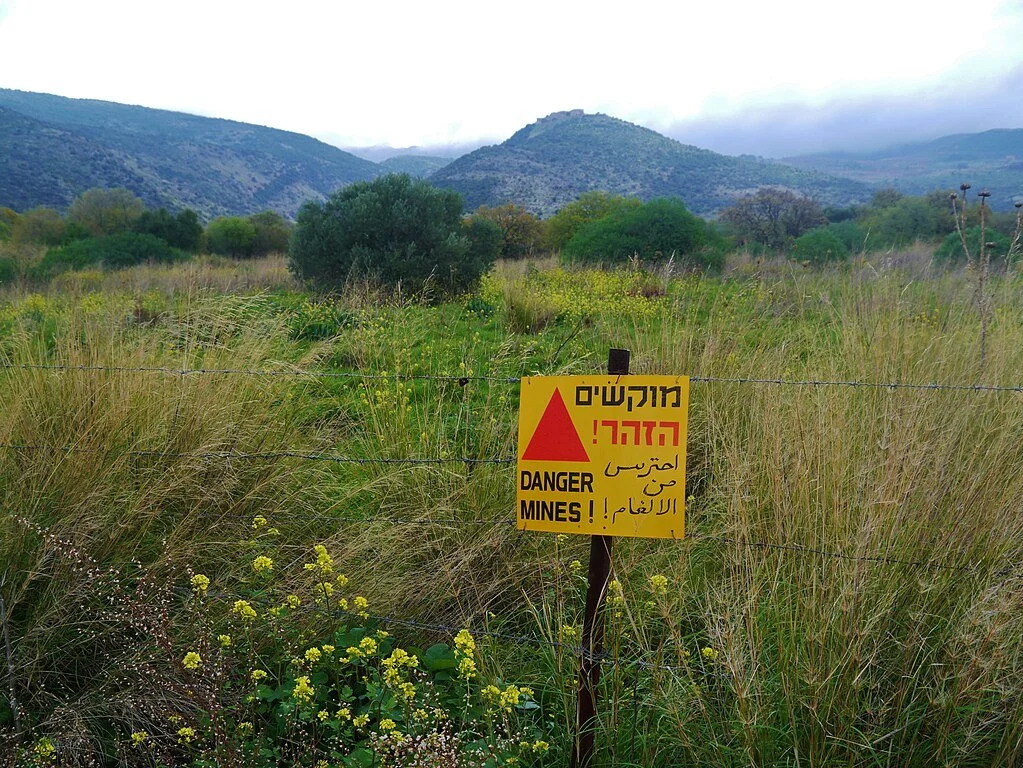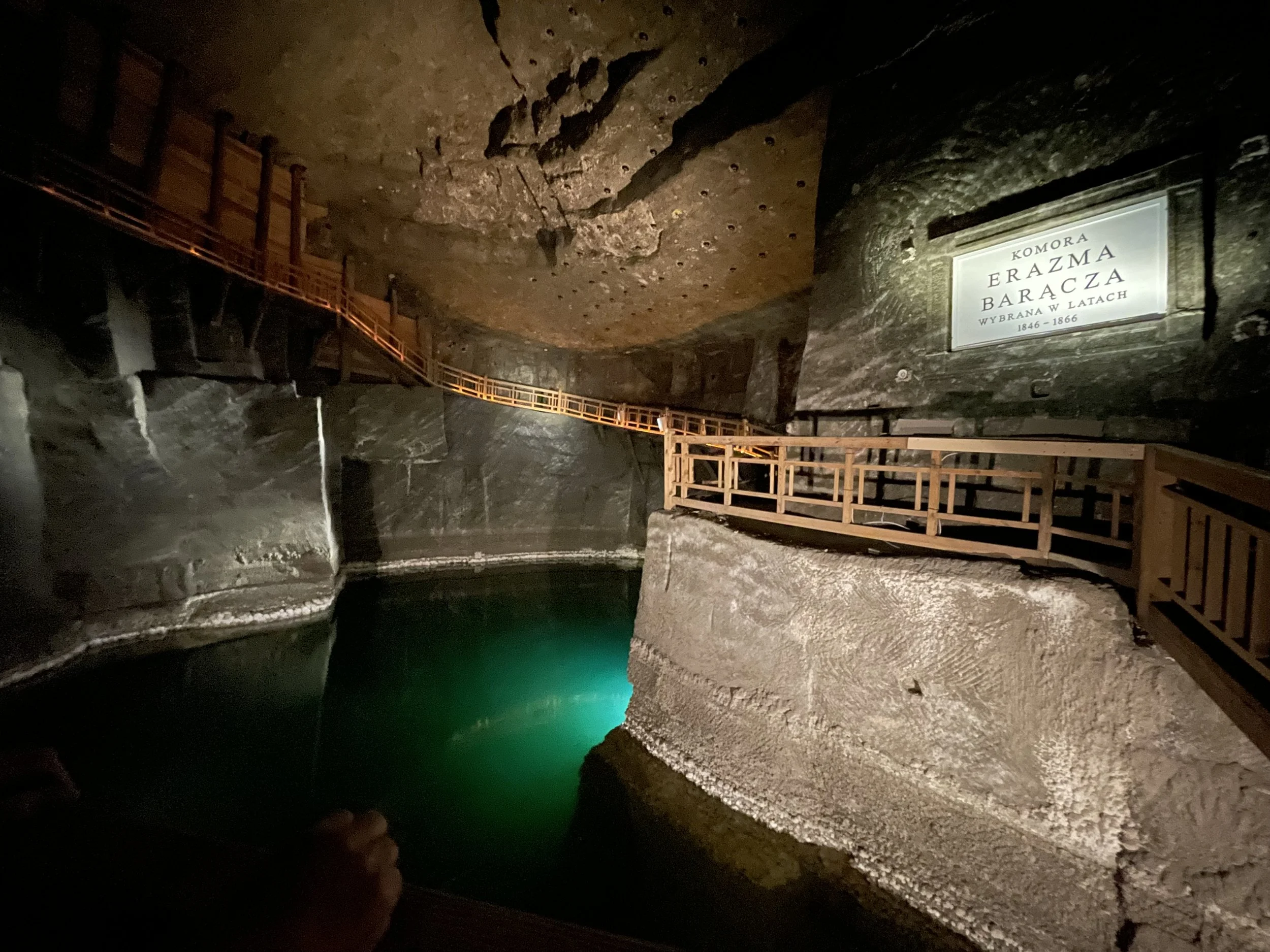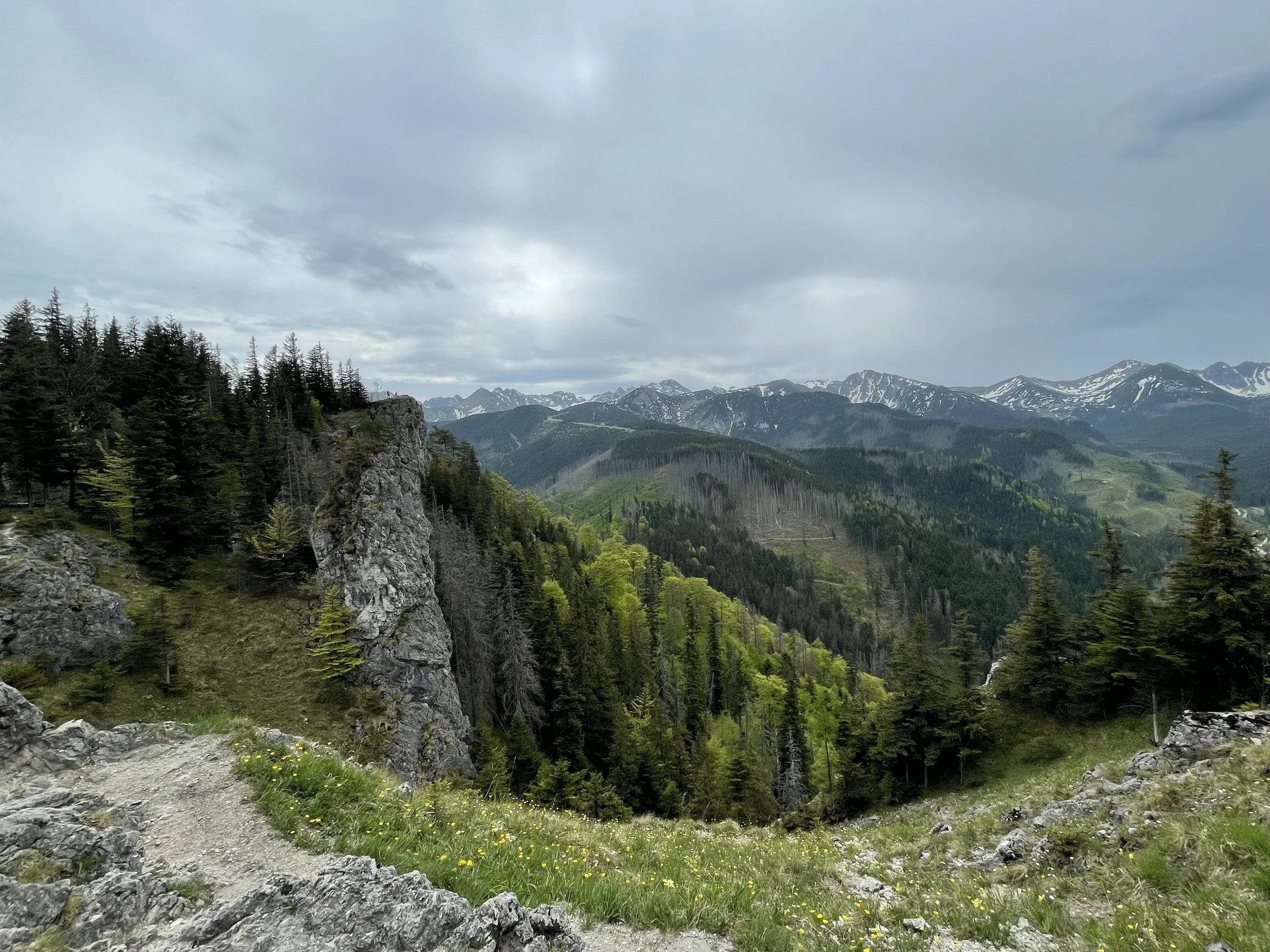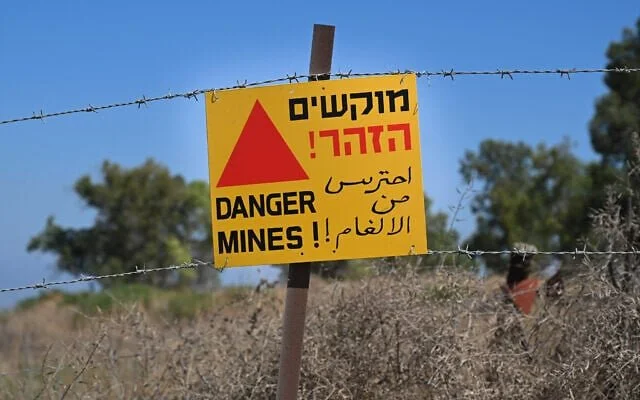May Basalt Flow Like Honey
A Meditation on Land, Loss and Love.
Mine field in the Golan Heights, photo by Zairon on Wikicommons.
The Golan Heights
When I was a child in Israel, my family often went on hikes. The car rides were tense—my parents fought most of the time—but on the trails, yellow hills, olive leaves, regal ibex, and ancient ruins softened the heart. One trip took five-year-old me and my family to the Golan Heights, that volcanic ridge bordering Syria and Lebanon, covered with tall golden grass and massive basalt rocks. It was a clear, bright day. We joined a group hike. I wandered away, carefree, following curiosity. The hikers’ voices faded behind me. I climbed higher, alone.
Then a voice broke the silence.
“!אַל תָּזוּז”
Don’t move.
I froze. The guide walked toward me with deliberate steps, arm extended. He carried me back across a fence I hadn’t seen. My father pointed to a sign in Hebrew I couldn’t yet read. His face was pale, furious, afraid. I realized the danger—I had wandered into a minefield left by the Syrian army after its retreat in 1967.
The ground beneath me—literally and ancestrally—had been about to explode. That moment, before words, seeded a lifelong instinct to walk toward the very places that frightened me.
Salt Mines of Wieliczka
Years later, after completing another Bearing Witness program to Auschwitz, I descended into the salt mines of Wieliczka, not far from Kraków—hundreds of years of tunnels carved into 250-million-year-old gray rock, where veins of salt glowed like starlight.
I was struck by the intimacy between human presence and deep geological time. Our guide explained that identical salt deposits appear across Eastern Europe, once part of a single vast formation later fractured by tectonic shifts.
What if we—all of us—carry within us deposits of the same salt: personal, ancestral, elemental? What if every trauma and tenderness is carved into the same dark stone—like Lot’s wife turning to watch her homeland ablaze, transformed into a pillar of salt, shattered and scattered across the earth and our hearts?
Salt Mines of Wieliczka, photo by the author
Tatra Mountains
Visiting the Tatra Mountains—the Carpathian ridge extending from Ukraine, once the stomping ground of the Baʿal Shem Tov—I was captivated by the tall pines, the mossy stones, the cool hush of the forest floor. I wrote to my teacher, Rabbi Art Green. He replied: “My teacher, Alexander Altmann, once said, ‘You’ll never understand Ḥasidism until you see the beauty of the Carpathian Mountains.’”
I could almost see them—my ancestors, roaming and foraging, the Baʿal Shem Tov leaping from peak to peak. I had always imagined them in sepia tones, soot and shtetls, but here they were: people of the land, of trees and frost, singers of birdsong, gatherers of roots.
As I walked down the mountain into town, a phrase kept returning like a mantra: Return to the land of your hatred. Return to the land of your hatred.
How did we come to fear this land so?
Tatra Mountains, Poland. Photo by the author
Passover in Przemyśl
Tectonic layers dislocate pockets of salt like war dislocates peoples. When Russia invaded Ukraine, I watched the news—helpless, numb, outraged, inspired. Przemyśl, a Polish town near the Ukrainian border, became a hub for refugees. It was also the hometown of my paternal grandfather, Avraham Apfel, after whom I am named. He had left for Palestine before the town’s Jews—our family among them—were killed in the holocaust.
A week before Passover 2022, I left in haste, traveling light. My plan was simple: to practice not-knowing, to bear witness, to trust whatever action or connection might arise.
In the days that followed, I joined volunteers distributing supplies, sat with Ukrainian parents and children over crayons and Google Translate in crowded train stations and kitchens, and channeled donations from friends and students.
On the last evening of Passover, I entered the Przemyśl train station and felt a sudden sadness. My mind returned to the pink-plastered house on Maja Street where my grandfather had grown up, which I had visited during the week. I had prayed there El Maleh Raḥamim to console the dead, then eaten shawarma at Samir’s Kebab—the only place open on Easter Sunday, praise be.
That night my inner “salt pocket” heard the “salt pocket” of my ancestors in concern: What if I am the last of our lineage to bear witness here? To come, to pray, to remember the real people with real names who lived and were taken? I felt their yearning mixed with outrage. How could I ever leave them, this house?
By morning I knew the resolution required a shift: to release them from that brick-and-mortar dwelling and invite them to a larger home.
One hour before my train, I walked to Maja Street—past the crafts shop, the bakery with a faded swastika on its wall, the green willow tree. I stood under the balcony, imagining my grandfather sitting there, watching the comings and goings. Light rain began to fall. I sang El Maleh Raḥamim. Someone at the nearby ATM glanced over. How long had it been since these streets heard a Freygish melody?
Thirty minutes till departure.
I invited the spirits to join me. I chanted Ana Bekoach to strengthen their resolve, to voice their yearning and outrage. Then I imagined the current occupants of the house—people living simple lives, perhaps unaware of the city’s history or my family’s story. Was there a way to bless the past and the present together?
I recited Birkat HaBayit, the blessing for a home and its dwellers, calling for prosperity and peace within its walls. The energy shifted. My voice quivered. I felt the ancestors’ tendrils release. They—and I—were no longer bound to that house.
I took a breath and offered Birkat HaDerekh, the blessing for the way, asking for safety, fulfillment of needs, and faith in not-knowing. I skipped the verse for safe returns. In my mind I placed everyone I had met that week—ancestors, refugees, volunteers, Poles, Jews, Ukrainians, Russians, all travelers on the Way—each moving through this vast uncertainty, this larger home.
The prayer ended. My legs were already walking. Light rain.
Crossing a bridge over the San River, the water shimmered. In the tunnel by the platform stairs, someone played a folk tune on an accordion. Travelers clutched their few belongings, staying close to those they loved.
The Cave and the Field
I dreaded entering the Bronx shul to lead the morning service that Simḥat Torah. Twelve hours earlier, reports of the Hamas attack on the Nova festival and the kibbutzim near Gaza had begun to spread. The congregation gathered—eyes red, alert. The prayers that morning were heavy. When we placed the Torah on the bimah, still wrapped in its cover, it hinted to me of the many funerals soon to come.
Nearly two years later, on the day of Hoshanah Rabbah, the unthinkable chapter that began on October 7th edged toward resolution with the release of hostages, living and dead. At last, we can breathe a little easier. There are no words to capture the fullness of feelings — mine, those who returned, those who received them back, those who did not return and those who will not receive them.
The hearts of Israelis stretched thin between euphoria and loss. The Jewish diaspora remains frightened and divided, and hundreds of thousands of Gazans are starving for hope. The danger of buried mines in the human heart remains. The task of rebuilding and healing feels insurmountable. How many hearts have frozen since, like massive basalt rocks? How many old rocks of salt were displaced, scattered, wept out? Out of, within, and alongside it all — “a voice continues to call, to proclaim” — the words of Hoshana Rabbah’s prayer whisper and call us deeper.
The Book of Zohar tells the story of Avraham returning regularly to pray in the field next to the Cave of Makhpelah where he had laid to rest his beloved Sarah and mother of Yizthak. One day Avraham heard a different calling from within the cave, “because the cave lies in the field, and that field abides in something else.“
When he entered, the earth rose and Adam and Eve appeared before him—the mythical ancestors not only of Israel but of all humanity. They acknowledged his long journey and opened for him a gate into Eden itself.
The rib returns to the ribcage. All scrolls are closed. Avraham’s Lech-Lecha—the human journey of seeking and yearning—comes home. Eden: the land of safety, where salt is replaced with honey, thick and sweet. Where black stones of frozen basalt flow with gentle warmth.
Adam and Eve calls us forward, today — toward the fields where scattered salt still lies. In Be’eri and Gaza, beneath the ash and ruin, traces of that salt remain: the mineral of tears, of covenant, of life that once pulsed there. It will take time for the land to taste its sweetness again. And here, across the sea, in New York and the diaspora — in sanctuaries and streets still haunted by distance and debate — the same salt glimmers underfoot. Our work is to gather it gently, grain by grain, and learn how to bless it anew.
Just as the tefillah on Shemini Atzeret we just celebrated calls for the flow of waters, in Eden, the Zohar concludes, “Nahal kedumim, Nahal adanim, delo paskan meimoi l’almin” - there is a river, the river of life, this life! Praying and working toward peace in the field of the world are part of the life of being a Jew. But a more mysterious yearning calls us to be –“geologists of the soul” —a term Rabbi Zalman Shechter Shalomi z”l coined — to return to the dark halls of our hearts illuminated by the silver veins of yearnings. Seeking is not complete until we unearth the dislocated and scattered pockets of soul — in ourselves, in each other, and in our ancestors — love them fiercely, so we can find ourselves, as have always been, in that ancient river.
A warning sign of a mine field near the Israeli-Syrian border in the Golan Heights, August 20, 2021. (Michael Giladi/Flash90, Times of Israel)



